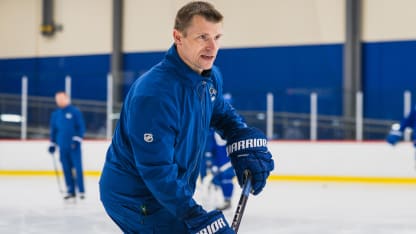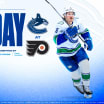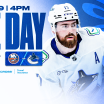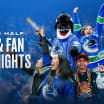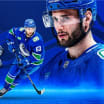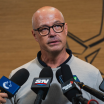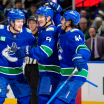Finding new and inventive ways to help some of the best hockey players in the world get better is a tall task.
There’s a lot of attention to detail, but as Canucks Skills Coach Yogi Svejkovsky says, it's about finding the competitive advantage.
“Most of it is figuring out how to get that one percent better because the one percent makes a difference,” Svejkovsky said.
“They have a foundation, and their foundation is strong, that’s how they got here. We respect that, but every one of them has to evolve with the game because the game is changing.”
No two seasons are ever the same, which he says is the fun part. Implementing new strategies and skills usually takes its cue from the Canucks’ top players; when the Canucks see how opposing teams try to shut them down, they’re ready to counter.
“The top players are always thinking about what they can add to their game because the disruption of the game is always getting better because of video, and the level of the coaches that work with the team,” he said.
Body position and movement on the ice is broken down into four skill groups, with and without the puck offensively and defensively, and he teaches different techniques for each. Those skills can be applied at any time to change the way they play.
“We believe that being hard to play against means doing the little things, unselfish things away from the puck that help you. Being really good at the net front, figuring out how to take more pucks out, recovering more pucks, and defensively - box out, denying net front,” he said.
Over the last couple of years angling on offence has been more important as teams are checking tighter giving players less time to set up. Being in position for the first touch on the puck starts with the route to the puck. Pinching on the boards happens more often now, and they work on things like beating a pinch on a breakout and breaking a forecheck with the body position and spacing principles, but numerous permutations. A forechecking session includes stick position, routes and the type of hit.
“As soon as you’re confident you have the skill set, other players can read off you and that’s how you build team games,” he said.
Svejkovsky explained they look at each player’s game individually in different scenarios and create a different plan. Players come to them with goals in mind too; whether it’s to work on their one-on-one play in the offensive zone or older players making adjustments in their games. They teach the players certain skills to fit into the Canucks’ system, and want the players to play to their strengths within it.
“A lot of times you don’t have to change what they are, you’re just trying to add,” he said.
Having worked with NHL players for nearly 20 years, the learning curve is different for each player. Svejkovsky started working for the Abbotsford Canucks three years ago and now with Vancouver over the last two years.
“There’s not an easy day in this league, but I find when the guys feel that they’re learning it makes it enjoyable,” adding the Canucks have created an environment to get everyone on the same page as the player’s desire to evolve and improve their game is just as important as the skills they come with.
“If you have skill with will then you have a beautiful combination.”

